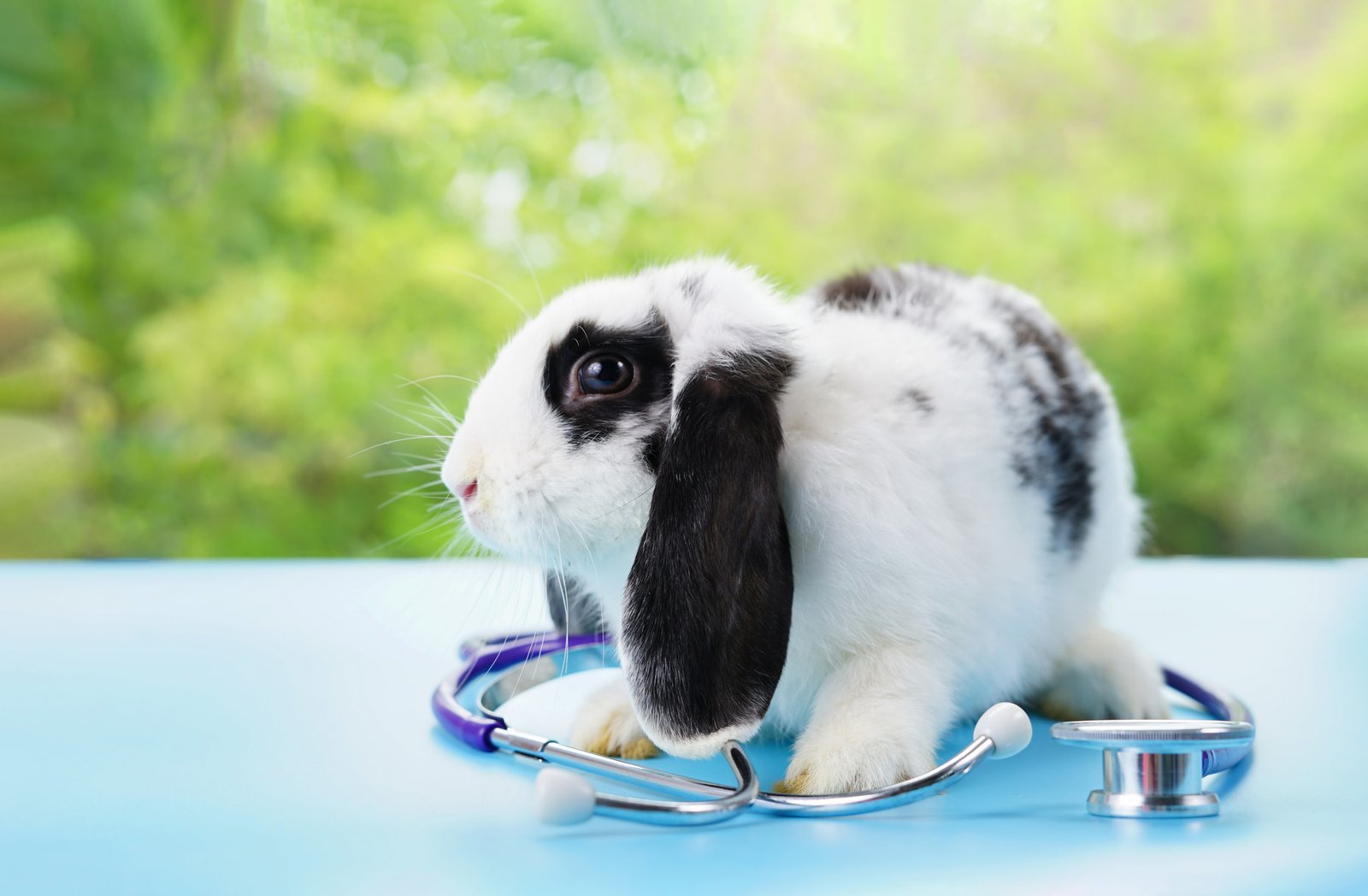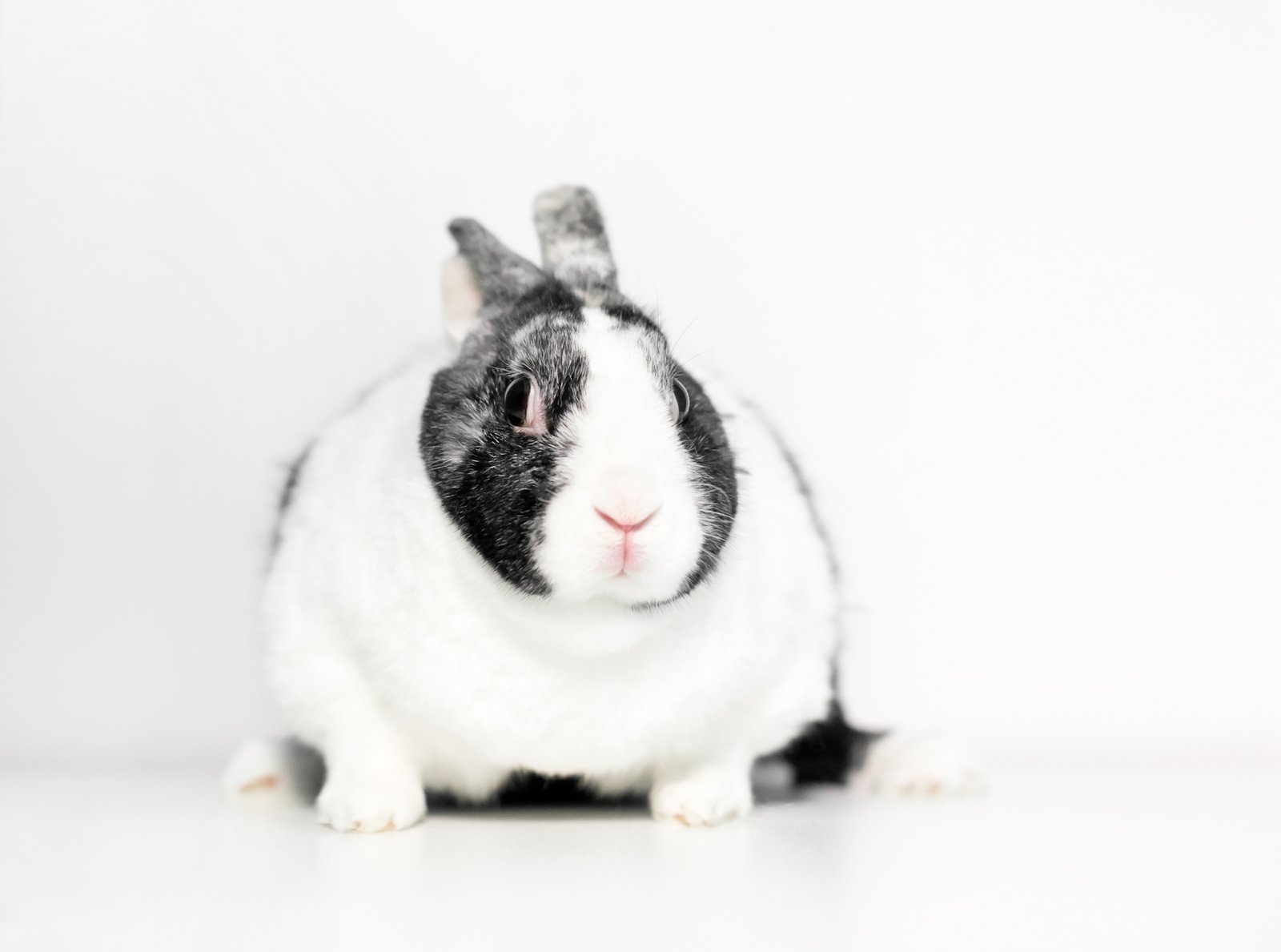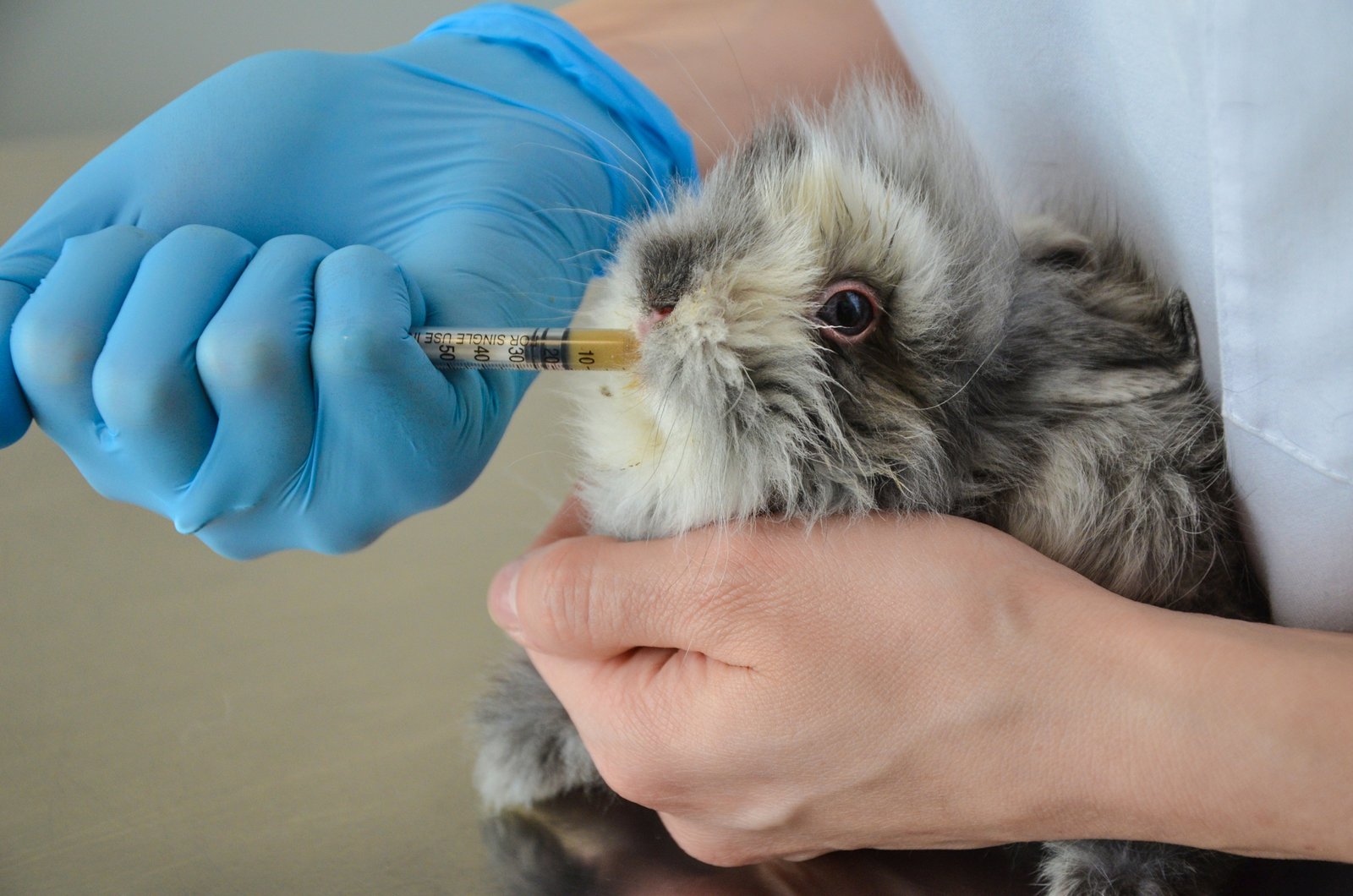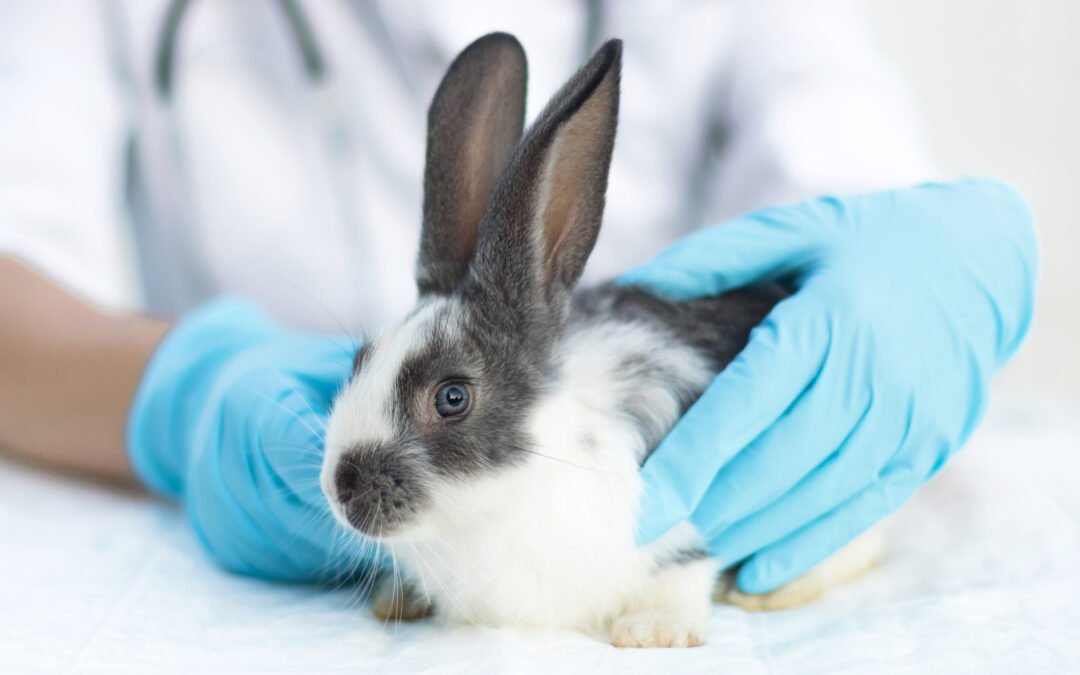Gastrointestinal stasis is a common health condition in rabbits. As a rabbit owner, you must know how to prevent your pet from suffering in this condition. If ignored, GI stasis can lead to death. This blog will help you identify the causes and symptoms of the disease. Plus, you will know how to treat bunnies with GI stasis and how you can help your pet from preventing it. Keep on reading to learn more!

Digestive System of Rabbits
As we know, rabbits are herbivores. Their digestive systems are designed to extract nutrients from their food. As hind-gut fermenters, they have a blind-ending sac at the large intestine. It is known as the cecum. It is located at the end of their digestive tract, responsible for aiding digestion.
To understand how rabbits digest their food, we must know the processes inside the system. First, the bunny grinds and breaks the plant fibers with its strong teeth. The ingested food goes to the stomach, where they are combined with digestive juices. This procedure converts them into smaller pieces to pass through the small intestine.
Next, the small intestine extracts the nutrients from the ingested food. It also adds more water so they can move smoothly in the rabbit’s gut. They will pass through to the cecum. It contains bacteria that break down the fiber to convert them to amino acids. They leave the cecum as nutrient-rich cecotropes.
Once the waste passes through the colon, the water is removed. The cecotropes and the waste pellets are excreted through the rectum. Amazingly, rabbits know when cecotropes are expelled. They will consume them directly from their anus. The cecotropes will again be digested, and nutrients will be extracted.
Gastrointestinal Stasis in Rabbits
Since rabbits cannot vomit, the movement of digestion must be continuous. When the motion slows down, the bunnies experience gastrointestinal stasis (GI stasis). Because of several factors, digestion may slow down in the stomach or the cecum. Despite the slow movement of the ingested food, the water will be expelled.
As a result, the ingested food becomes dry and thick, making it more difficult for the gut to move smoothly. Once the cycle continues, a dehydrated ingested food would stay on the bunny’s stomach. It will prevent the gut from moving correctly, causing pain and discomfort to the rabbit. As the cecum ferments the ingested food, your pet may experience gas pain and bloatedness.
The immobility of the gut may also result in the increasing bad bacteria within the bunny’s cecum. Besides gas pain, the bunny may die due to enterotoxemia. Hence, it is crucial to detect GI stasis in your bunny to provide immediate medical attention. In the following section, you will know what the causes of this condition are.
Causes of Gastrointestinal Stasis
An improper diet is the primary cause of GI stasis in rabbits. Fiber is vital to your bunny’s diet since it aids digestion, improving the gut’s motility. Thus, you must ensure that your bunny gets enough fiber to prevent GI stasis. Large quantities of legumes, starch, and commercial pellets lead to this condition.
Besides improper diet, a dehydrated bunny may also suffer from GI stasis. Water aids in the digestion of food, absorption of nutrients, and removal of wastes. Without enough water, the ingested food will not have enough moisture. It also prevents hair and food particles from clumping together.
Another cause of GI stasis is stress. Unlike other pets, rabbits need to have continuous movement in their guts. When a bunny is stressed, it loses its appetite and stops taking enough food and water. Your bunny may experience stress due to pain or an unhealthy environment. They may also suffer from anxiety because of the lack of attention and companionship.
Bunnies that don’t have enough exercise are more prone to GI stasis. Since they cannot burn their fats, they can quickly become obese. Obesity may lead to severe conditions, such as GI stasis. It would be better to give your pet enough time to exercise daily. Massaging its stomach also improves the gut’s motility.
Lastly, an intestinal blockage can prevent the bunny from digesting properly. Your pet may have ingested its fur, leading to blockage. It is also possible that it consumed foreign objects, such as carpet fibers. You can prevent GI stasis by grooming your pet and making your home rabbit-proof.

Symptoms of Gastrointestinal Stasis
Reduced appetite
Due to the pain and discomfort, your bunny will stop eating its food. If your bunny doesn’t touch its food for more than four hours, consult the vet regarding its situation. But if it is already more than ten hours, you need to seek immediate medical attention for your pet. It would be better to divide your bunny’s food into two portions: one for the morning and the other for the evening. You will easily monitor if your bunny is eating its food or not.
Little or no droppings
Rabbits poop a lot, so it is alarming when they have little or no droppings at all. It is an indication that there is something wrong with your bunny’s digestion. It is advisable to check your bunny’s litter box regularly to know its condition. If your bunny doesn’t poop within ten hours, you must bring it to the vet immediately.
Hunched position
A hunched position is a sign that your pet is experiencing pain. It may look like your bunny is in a loaf position. However, its weight is on its front paws to prevent its stomach from touching the ground. You may also hear loud gurgling in its belly and its eyes squinting. It may also grind its teeth because of too much pain.
Changes in behavior
As active pets, rabbits love to play and hop around. If your pet is not moving as it is used to, it may be sick. In addition, rabbits that have GI stasis are weak and can be feisty. They don’t like to be handled and cuddled. These pets prefer to be left alone because of the discomfort they are experiencing. Suppose the vet suspects your bunny is suffering from GI stasis. In that case, he will perform physical examinations such as blood tests and X-rays.

Treating Gastrointestinal Stasis
For bunnies that don’t have intestinal blockage, an abdomen massage can help to improve the ut’s motility. But ensure that the vet has advised you to do the procedure. You can also give simethicone to your bunny to relieve the gas pain. If the gas pain is acute, the recommended dosage is 1 to 2 cc every hour for three doses.
Giving oral fluids to your bunny can soften the hard intestinal contents inside its gut. The best oral fluid to give is water. However, you can also provide electrolyte drinks like unsweetened Pedialyte. You must also force-feed your pet by giving it ready-to-mix Critical Care. Get a syringe the fill it with 1 to 2 cc of the formula. Insert the syringe behind the bunny’s incisors.
If your pet already has a severe condition, the vet will prescribe drugs to treat your pet. Some of these are motility drugs, such as Reglan and Propulsid. The vet may also conduct subcutaneous fluid therapy for your pet. He may also provide enzymatic digestive aids, like papain and bromelain.
Furthermore, your bunny has to take appetite stimulants to get enough nutrients. There are also instances that some vets prescribe antibiotics to combat secondary infection. However, it must be given with caution. Your bunny may also need pain relievers to prevent extreme abdominal pain.
The recovery of your bunny may take two weeks or more, so you have to be patient. As much as possible, prevent handling your pet. You must also not separate it from its bonded mate since it may only cause stress. It would also be better to have a stethoscope to monitor the intestinal sounds.

Preventing Gastrointestinal Stasis
Giving a rabbit enough hay will prevent it from experiencing GI stasis. It must be 70% to 80% of your bunny’s diet. For young bunnies, alfalfa hay is highly recommended. But when they turn into adults, you must replace their food with timothy hay. You can also add leafy greens to your pet’s diet since they are rich in water and other nutrients. Also, ensure that your bunny remains hydrated by providing unlimited clean water daily.
Since stress affects your bunny’s appetite, give your pet a healthy environment. Keep it away from loud noises and aggressive household pets. Furthermore, provide your pet with a lot of exercises. A bunny requires at least three to four hours of exercise outside its enclosure. You can also plan activities to encourage your pet to stretch and hop inside the hutch.
If your pet lives inside your home, keep away all the foreign objects it can ingest. You must also groom your rabbit regularly. For a short-haired bunny, brush its coat at least once or twice a week. But if you have a long-haired rabbit, you must comb its fur every three days. When your pet is shedding, groom it daily to remove loose furs. Below is a video discussing how you can save your bunny from GI stasis.
Frequently Asked Questions
How long does a bunny recover from gastrointestinal stasis?
If treated immediately, your bunny can poop properly after four days. However, it may take more than two weeks before the motility of its gut goes back to normal. You must be patient when caring for a bunny recovering from GI stasis.
What foods can cause GI stasis in rabbits?
Foods that have too much carbohydrates and are low in fiber can cause GI stasis in your pet. Never give starchy food to your bunnies, such as pasta and bread. Providing large quantities of sweet treats can also cause an imbalance in the bunny’s gut flora. You can give fruits to your pet that are low in sugar.

Conclusion
Gastrointestinal stasis is a severe condition that you should not ignore. As much as possible, provide your bunny with a high-fiber diet. You must also keep it hydrated by giving it enough water. You can help prevent your bunny from suffering from this health condition. Don’t hesitate to seek immediate medical attention if you have seen any symptoms.



